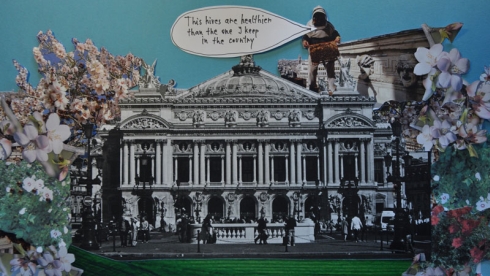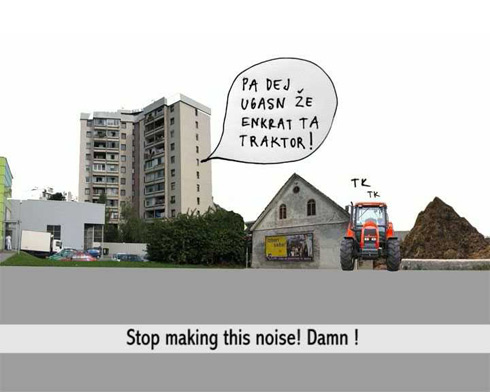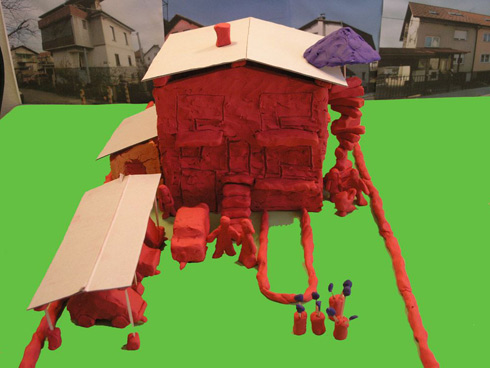Polonca Lovšin – animation documentaries
Polonca Lovšin
Back to the City, 2011
Video animation
Duration: 13 min 35 sec
Sound: Bojan Brajkovič
Voice: Matija Vastl
English translation: Rawley Grau
Supported by: The Ministry of Culture of Slovenia
A few years ago, when bees began dying in large numbers in Slovenia, a story about a beekeeper in the city of Kranj caught my attention: he had harvested more honey than his friend in the countryside. This was the beginning of my research on bees, which in fact is not so much about bees as it is about man’s relationship to nature, food, the city, and the countryside. The story is presented through the eyes of the main character, a man, in the form of his inner monologue, in which his thoughts jump from historical, biological, and physical facts to information garnered from the daily newspaper and the Internet. The work focuses mainly on the perception of nature in the city and in the countryside, and it questions, in particular, our established conceptions about rural and urban nature.

Polonca Lovšin
City Cows, 2009
Video animation
http://www.youtube.com/watch?v=o_elermjBmQ
I am always surprised when I find myself tailing a tractor when driving through the center of Ljubljana, or when I come across people carrying fresh milk cans in the middle of a housing estate. They remind me of rural life, although I am in a city. The city of Ljubljana has a great number of farms. Together with forested areas, they account for two thirds of the territory encompassed by the municipality. What does that mean? Has Ljubljana never fully developed into a city? Or is it perhaps one step ahead in its development, having farms-within-the-city that will provide urbanites with food, something that is bound to become a great advantage in the future.

Polonca Lovšin
Why Slovene Houses Look the Way They Do, 2007
Video animation
Duration: 7 min 15 sec
Supported by: The Ministry of Culture of Slovenia
http://www.youtube.com/watch?v=4y-Op6_V-1Q
The video shows a story of Polonca’s family house which her father started to build in the mid 60s when he moved from countryside to Ljubljana. The house in which more generations were living was slowly growing through time with the help of family inventiveness and simple forms of parallel economy. One can say that the story of their family house is a typical case of one-family houses in Slovenia which are most often built on the basis of “do-it-yourself” way. While overlapping personal story and statistical data about urbanization processes in Slovenia, video introduces to us the different economical, social and aesthetic standards which shape the architectural landscape in Slovenia.

